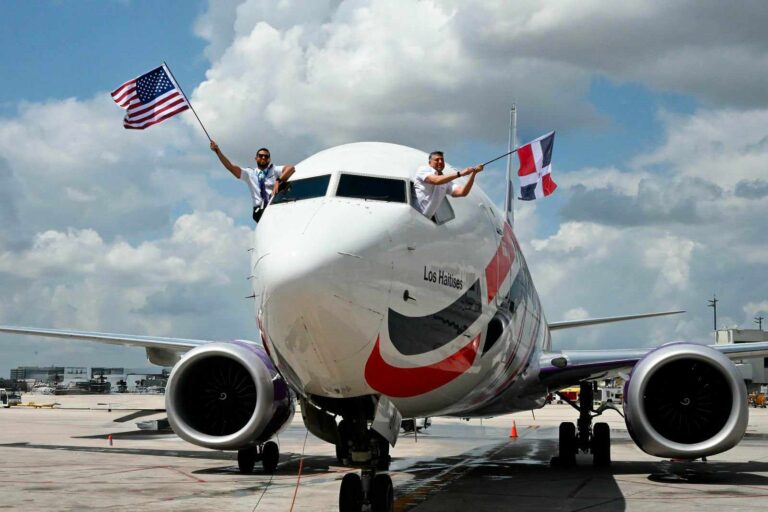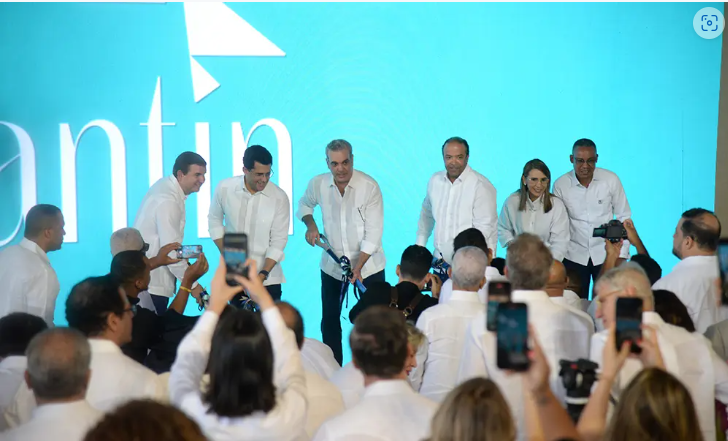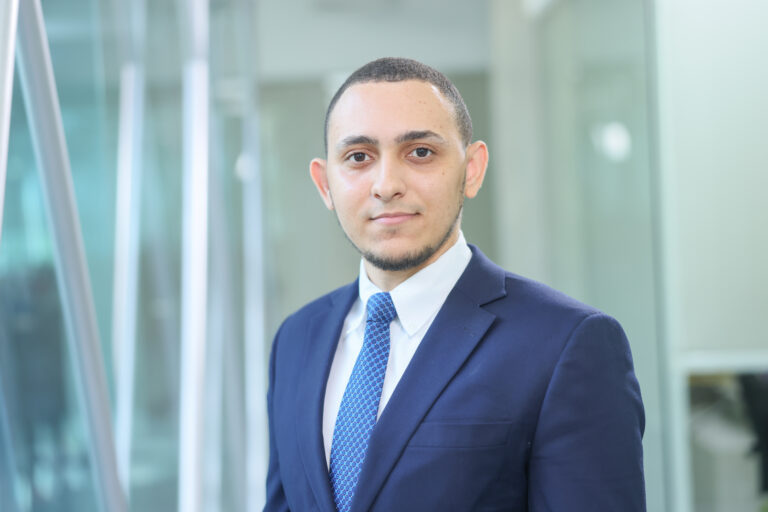En una entrevista para LISTÍN DIARIO el ministro de Energía y Minas, Antonio Isa Conde, asegura que la industria extractiva se desarrollará de manera sostenible en República Dominicana, pensando en el hoy y en las futuras generaciones, en coordinación con el medioambiente y la preservación de las áreas protegidas.
Isa Conde también explica que la industria realizará sus operaciones de forma subterránea, como es el caso de Cormidon que con una nueva tecnología expandirá sus explotaciones por diez años más; y que se avanza en el fomento de las exploraciones de petróleo y gas. También destaca la importancia del PDAC.
1. Explique el futuro cercano de la industria extractiva en RD. Su proyección.
Para explicar el futuro de la industria extractiva hay que pensar en la visión con que el país piensa fomentar esta actividad. Desde el gobierno del presidente Danilo Medina y desde el Ministerio de Energía y Minas tenemos una visión de desarrollo sostenible.
Podemos fomentar la industria extractiva apegados a reglas claras tanto en materia tecnológica minera como medioambiental. Sobre todo, garantizando que los recursos que genera esta actividad vayan en beneficio de la gente de hoy y de mañana.
Si la industria extractiva se maneja bajo esta concepción podríamos obtener mejores resultados de los que se han obtenido hasta ahora en materia de desarrollo. En el pasado la industria minera dominicana fue una fuente de expoliación de las riquezas de nuestro pueblo. La gran industria extractiva dominicana se está transformando y el Estado tiene que mantener su vigilancia y manejo prudente a los nuevos hallazgos a las nuevas exploraciones.
2. ¿Hay proyectos nuevos en RD? y ¿dónde?
Tenemos dos grandes exploraciones que se están haciendo en oro. Una en el área de San Juan y otra en Restauración, con muchísimo potencial. Pero también se han hecho descubrimientos en minas que ya estaban en explotación e incluso en la fase terminal de la explotación, como es el caso de la mina que maneja Cormidom en Maimón, que ha descubierto un nuevo yacimiento y estará en capacidad de explotarlo en unos dos años con la gran ventaja de que esa -que es una concesión minera a cielo abierto- con esa nueva veta se va a transformar en una explotación subterránea y a donde se plantea el cierre paulatino de la mina que está abierta. Si no se hubiera hecho ese descubrimiento en poco tiempo la mina se cerraría y ya estaba dejando pérdidas. Esto les permitirá, según nos han manifestado sus administradores, prolongar unos 10 años esa explotación en el país.
3. ¿La industria minera ha avanzado en el país acorde con normas globales?
Tenemos un pasado ignominioso que comenzó con la conquista, donde nos cambiaban el oro por espejitos, y luego una explotación irracional a la que nos sometió por ejemplo la Rosario Dominicana, sobre todo en tiempos en que la administraba el Estado, así como otras como la Alcoa en Pedernales.
Hoy se está aplicando una nueva tecnología que -por ejemplo- no solamente permite a Barrick una explotación del contenido mineral que tenían los sulfuros dejados por la Rosario, sino que permite la remediación de esos pasivos ambientales preexistentes. La tecnología de la industria extractiva se ha modernizado en el país y en el mundo y los desechos se manejan con más cuidado, la industria ha progresado.
Y esto obedece a varias cosas. A nivel mundial el movimiento verde ha presionado para que se usen nuevas tecnologías, para que los propios accionistas de las empresas adquieran conciencia y exijan a sus administradores el manejo adecuado y sostenible. Hemos dado pasos muy grandes, ya somos parte de la Iniciativa por la Transparencia de la Industria Extractiva (EITI, en inglés). Es un estándar que obliga a los países a hacer transparentes los contratos, ingresos y uso de los ingresos que producen estas empresas. Nuestro país es miembro de EITI desde hace un año.
4. ¿Serán aprobadas solo extracciones subterráneas o a cielo abierto?
Propiciamos la explotación subterránea de los recursos mineros porque, como dijimos anteriormente, son más amigables con el medioambiente. Pero aún así tenemos que mantener la supervisión y las normas porque tenemos que defender las fuentes acuíferas y tenemos que exigir que se implementen normas extractivas que garanticen la preservación del agua. Esa es una responsabilidad del Ministerio de Medioambiente, pero también de nosotros en cuanto se refiere al manejo tecnológico.
5.-¿Qué planes hay tanto con territorios de áreas protegidas, como Pedernales?
Las áreas protegidas debemos defenderlas. Tenemos que tener mucho cuidado con permitir una exploración o una explotación en esas áreas, a menos que sea un descubrimiento de tal impacto que su efecto sea infinitamente más positivo que su mantenimiento como reserva. En el MEM hemos probado con acciones y con hechos que no damos concesiones en áreas protegidas, no importa a quién nos enfrentemos.
6.- Existe un plan de exploración para concesiones petroleras. ¿Cuál es el avance?
El desarrollo de la industria nacional de hidrocarburos ha dado pasos muy importantes el último año. Hicimos el primer reglamento de exploración y explotación de hidrocarburos, hemos recopilado una cantidad enorme de investigaciones sísmicas que se habían hecho en el pasado y que el país no contaba con ellas, investigaciones que hacerlas ahora tendría un costo superior a los 100 millones dólares, y con ese material identificamos seis bloques importantes donde existen efectivamente sistemas petroleros.
7.- Explique la importancia que encierra el PDAC, en Toronto.
Este es el evento más importante de la minería a nivel mundial. Ahí uno entra en contacto no solo con los potenciales inversionistas sino que también conoce las nuevas tecnologías que se están usando pero sobre todo intercambia experiencias.
Ahí nos dimos cuenta hacia dónde va la minería a nivel mundial y que esa visión con la que estamos trabajando en República Dominicana en la minería, de desarrollo sostenible, de pensar en una industria extractiva de cara al futuro, pensando en el ser humano y su hábitat, eso ya es una corriente mundial que no la para nadie.
Ahí pudimos compartir con comunidades indígenas defendiendo su derecho a preservar el ambiente, fundamentados en las nuevas tecnologías y en una visión innovadora donde el ser humano es el centro del desarrollo.
Esa fue para mí una experiencia constructiva, el país tiene que mantener estos contactos. República Dominicana está en el radar de los mercados mundiales. Ya no se conoce solo por Punta Cana y nuestros peloteros, el país se está conociendo por su potencial en materia de industria extractiva y también porque ha logrado el mayor crecimiento económico en los últimos años.
Fuente: Listín Diario.[:en]
In an interview for LISTÍN DIARIO the Minister of Energy and Mines, Antonio Isa Conde, stated that the mining industry in the Dominican Republic will be developed in a sustainable way, keeping today and future generations in mind, in coordination with the environment and the conservation of protected areas.
Isa Conde also explained that the industry will conduct its underground operations with new technology, as in the case of Cormidon which will expand its holdings for ten years, and that progress is being made in promoting oil and gas exploration. He also highlights the importance of PDAC.
- Explain the immediate future of the extractive industry in DR. Your forecast
To explain the future of the extractive industry you need to think about how the country envisions fostering this activity. President Danilo Medina ´s government and the Ministry of Energy and Mines envisage sustainable development.
We can encourage the mining industry by adhering to clear rules in both mining and environmental technology, above all, ensuring that the resources generated from the industry benefit the people of today and tomorrow.
If the mining industry is managed based on this concept then we could get better results in terms of development than the ones so far. In the past the Dominican mining industry was a way of plundering the wealth of our people. The large Dominican mining industry is being transformed and the State has to remain vigilant and manage the new findings and new explorations prudently.
- Are there new projects in the DR and where are they?
There are two large explorations into gold -one near San Juan and another in Restoration- with a lot of potential. But there have also been discoveries in mines that were already operating and even in the terminal phase of exploitation, as is the case of the mine that Cormidom handles in Maimón, where a new deposit has been discovered and will be ready for extraction in about two years, with the great advantage that this – an open-pit mining concession – will be transformed into an underground operation with this new vein and the open mine will gradually shut down. If that discovery had not been made the mine would have soon closed as it was already showing losses. We have been told by the managers that this will allow them to extend the holding in the country by 10 years.
- Has the mining industry in the country progressed by global standards?
We have an inglorious past that began with the (Spanish) conquest, where we exchanged gold for mirrors, and then an irrational exploitation under the company Rosario Dominicana, for example, especially when it was administered by the State, as well as others such as Alcoa in Pedernales.
New technology is being applied today which not only allows Barrick, for example, to exploit the mineral content of the sulphide left by Rosario Dominicana, but allows these preexisting environmental liabilities to be remediated. Mining technology has been modernized in this country and throughout the world and waste is handled more carefully, the industry has progressed.
This is due to several factors. The green movement has been pushing for the use of new technologies globally, so that the shareholders of the companies themselves become aware and require their managers to manage them properly and sustainably. We have taken huge steps, we are already part of the Extractive Industry Transparency Initiative (EITI). It is a standard that obliges countries to make the contracts, income and use of the income that these companies produce transparent. Our country has been a member of the EITI for a year.
- Will only underground extraction be approved or open mining too?
We encourage the underground exploitation of mining resources because, as we said before, it is more environmentally friendly. But we still have to keep monitoring and maintaining standards because we have to defend water sources and we have to demand that mining regulations are implemented guaranteeing the conservation of water. That is a responsibility of the Ministry of the Environment, but ours too as far as technological management is concerned.
- What plans are there for protected areas, such as Pedernales?
Protected areas must be protected. We must be very careful when allowing exploration or exploitation in those areas unless it is a discovery of such magnitude that its effect infinitely outweighs keeping the reserve. We in the Ministry of Mining have proven with actions and facts that we do not give concessions in protected areas, no matter who it is.
- Is there is an exploration plan for oil concessions? How is that going?
The development of the national hydrocarbon industry has taken very important steps in the past year. We issued the first regulations for exploring and exploiting hydrocarbons. We have compiled an enormous amount of seismic data from investigations that were done in the past but the country didn´t have access to, research that would now cost more than $ 100 million and we identified six important blocks where oil systems actually exist using this data.
All this information is online at www.bndh.gob.do. Making this database available to anyone who wants to see it is unprecedented because normally that information is either retained or sold. We are also now preparing tenders to add 10,000 kilometers of seismic lines to the 20,000 we already have today, and this could be valuable information for the country.
- Explain the importance of the PDAC in Toronto
This is the most important event in the mining industry worldwide. It´s where you not only meet potential investors but you hear about new technologies and above all exchange experiences.
That´s where we realized where mining is heading on a worldwide scale and that the vision we are working on in mining in the Dominican Republic, one of sustainable development, thinking of a mining industry in terms of the future, about the human being and his habitat, is an unstoppable global trend.
We shared with indigenous communities defending their right to preserve the environment, on using new technologies and based an innovative vision where the human being is the center of development.
It was a constructive experience for me, the country has to keep these contacts. Dominican Republic is on the world markets radar. We are no longer known just for Punta Cana and our baseball players, the country is being recognized for its potential in the extractive industry and because it has reached the greatest economic growth in recent years.
Source: Listín Diario.[:]




